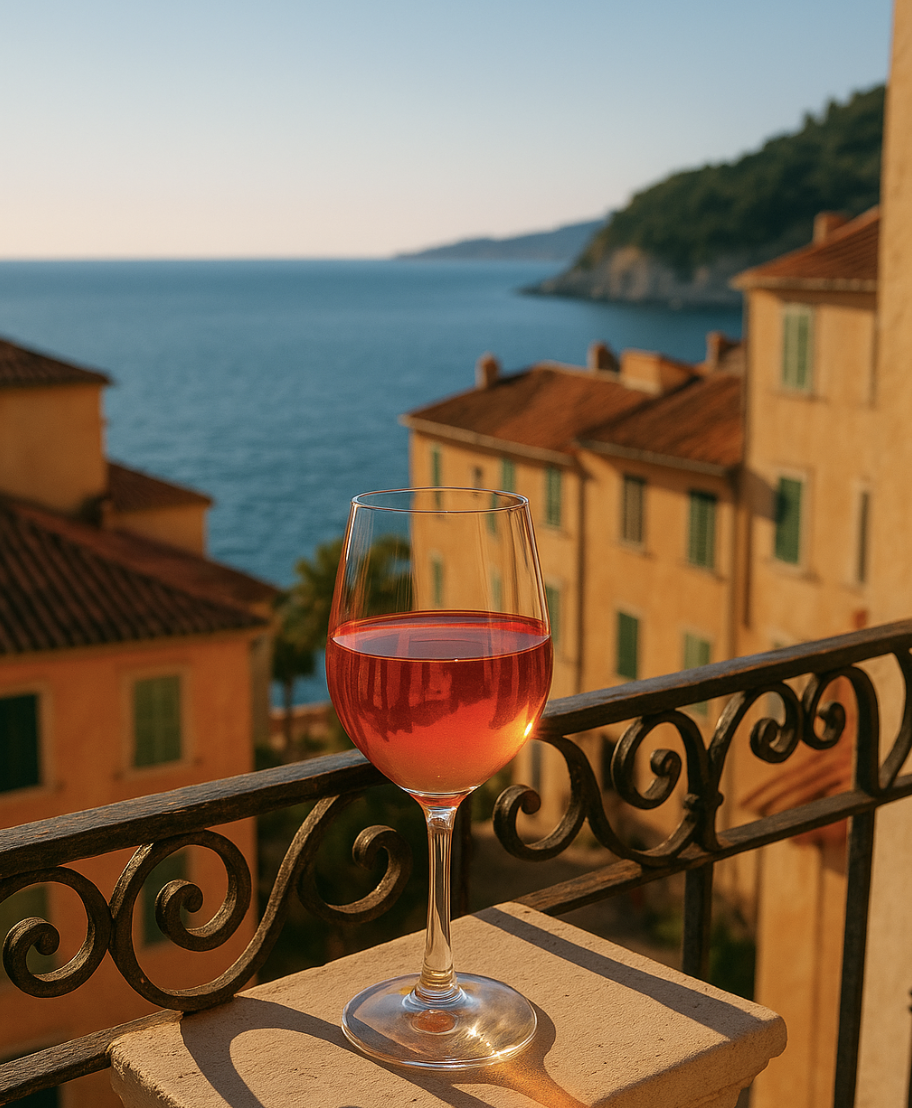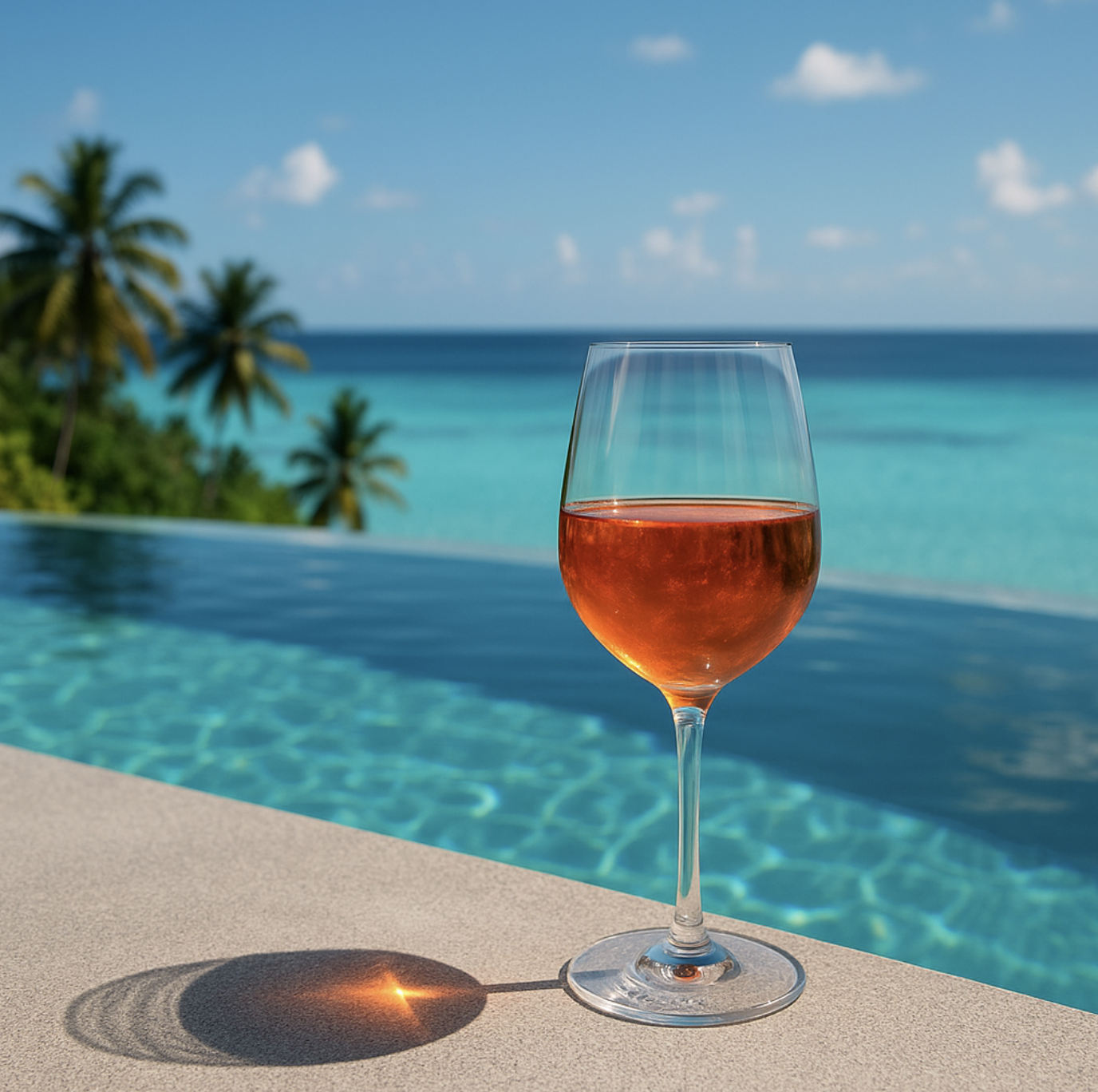Rosorange: The Sunset in a Glass That’s Rewriting the Rules of Summer Wine
You’ve seen blush.
You’ve seen gold.
But there’s a moment when the two meet: somewhere between the faint sigh of a late summer peach and the deep exhale of a sunset.
That’s where rosorange lives.
Hold a glass to the light and you’ll see it isn’t just a color…it’s a mood.
Amber, vermillion, copper-rose, each swirl a shifting tide of pigment. It feels almost alive, like the glow of a day that refuses to end.
Rosorange isn’t an accident. It’s a deliberate bridge between two worlds:
The bright, dry crispness of rosé
The earthy, textured depth of orange wine
It’s not the result of blending two finished wines. It’s a method, a philosophy of fermentation, and it’s rewriting what summer in a glass can mean.
How Rosorange Is Made: The Dance Between Light and Shadow
Winemaking is always about choices: when to harvest, how to press, how long to leave skins and juice together in the same slow embrace.
Orange wine method: Made from white grapes, but left in contact with their skins for days or weeks, drawing out tannins, texture, and a burnished copper color.
Rosé method: Made from red grapes, with skins whisked away after a brief flirtation…just enough to tint the juice a delicate pink.
Rosorange borrows from both traditions. Winemakers might:
Start with white grapes, let them mingle with skins for a few days (not weeks) to build structure.
Add a touch of red grapes for extra hue and fruit notes.
Or work entirely with pale-skinned varieties that naturally deepen with minimal skin contact.
The result is less tannic than orange wine, but more layered than rosé…an intentional middle ground that manages to feel both new and familiar.
A Flavor Map: What Rosorange Tastes Like
Close your eyes on the first sip and the mouthfeel will tell you, this isn’t just a rosé in fancy dress.
Primary notes include:
Cherry and wild strawberry, nectarine and apricot, and a whisper of mandarin peel.
Secondary nuances:
White tea leaves, faint almond skin bitterness, and a lick of sea spray salinity.
Where rosé says summer picnic, rosorange says summer picnic that turns into a late-night bonfire.
It begins crisp, but there’s weight beneath the brightness, a structure that makes it linger on the tongue and in the memory.
Why It’s Having a Moment in 2025
Wine trends can feel fleeting, but rosorange is doing something more than catching the light on Instagram.
\It’s a visual knockout. That glowy, photo-perfect color practically asks to be poured in clear-stemmed glasses at golden hour.
It’s a flavor bridge. Rosé lovers get freshness; orange wine fans get depth. Everyone meets in the middle.
It’s affordable. With bottles like Aldi’s £9.99 and Waitrose’s Côté Mas Rosorange, the style isn’t locked in the boutique price range.
It’s food-flexible. Works with salads and seafood but doesn’t shy away from spice or charred meats.
The Story Behind the Style
Though rosorange is basking in the 2025 spotlight, its roots reach further back.
Experimental winemakers have long played with hybrid maceration techniques: blending inspiration from Provence, Friuli, and Georgia (the country, not the U.S. state!).
Only recently did the style earn a name catchy enough to resonate with buyers.
“Rosorange” feels intuitive, a word you can say once and picture instantly.
In that sense, its marketing magic is as strong as its winemaking artistry.
Pairing Rosorange: Food for a Sunset-Hued Wine
Rosorange’s versatility is one of its greatest charms.
Its bright acidity and subtle grip mean it can stand beside a surprising range of dishes:
Starters: Burrata with grilled peaches, watermelon feta salad, Vietnamese spring rolls
Seafood: Grilled prawns with chili-lime butter, seared scallops, sushi with fatty tuna
Meats: Chargrilled chicken with sumac, lamb kofta, barbecue pork belly
Vegetarian: Roasted eggplant with tahini, mushroom risotto, spiced cauliflower steaks
Dessert: Blood orange sorbet, almond tart, strawberries with balsamic glaze
This is a wine that can accompany the entire arc of a summer evening, from the first chilled bites to the last spoonful of something sweet under string lights.
Rosorange in Cocktails
Though purists may balk, rosorange has cocktail potential thanks to its balanced acidity and layered flavors.
Rosorange Spritz: Rosorange + soda water + a splash of Aperol, garnished with dehydrated orange slices.
Rosorange Sangria: Rosorange + elderflower liqueur + peaches + strawberries + mint.
Frozen Rosorange: Blend with ice, a dash of lemon juice, and a hint of agave syrup for the ultimate heatwave relief.
The Emotional Side of Rosorange
Some wines feel like they belong to a place.
Others feel like they belong to a season.
Rosorange feels like it belongs to a moment…that breath between day and night when the air is warm, the sky is streaked with color, and you want to pause time just a little longer.
Drinking rosorange is like wearing linen that’s been warmed by the sun, or finding yourself in a conversation that turns strangers into friends.
It’s a sensory tether to something fleeting and beautiful.
The Future of Rosorange
Will it be a summer fling, or a staple style?
Early signs suggest it’s here to stay, not just because it’s pretty, but because it’s good.
Winemakers love working with it, consumers love drinking it, and its flexible approach fits perfectly with the increasingly blurred boundaries between wine categories.
Expect to see:
More single-varietal rosoranges (Grenache, Pinot Gris, Malvasia)
Natural wine producers experimenting with extended lees aging
Restaurants offering rosorange by the glass alongside classic rosé
Rosorange Wines to Try
Côté Mas Rosorange (France) – From Languedoc, made with Grenache Gris and Grenache Noir, this bottle offers juicy peach, citrus peel, and a silky finish. Affordable and widely available in Europe.
Aldi Specially Selected Rosorange (Spain) – A budget-friendly crowd-pleaser, with notes of watermelon, tangerine, and a light herbal lift. Perfect for summer sipping.
Meinklang Rosa Orange (Austria) – Biodynamic and lightly sparkling, made with Pinot Gris and Pinot Noir. Tart red berry meets chamomile tea in a zippy, lively style.
La Stoppa Ageno (Italy) – More on the structured side, this skin-contact beauty blends Malvasia di Candia Aromatica, Ortrugo, and Trebbiano, with apricot, almond, and spice notes.
Matassa Brutal! Rosé Orange (France) – A natural wine favorite from Roussillon, unfiltered and wild, showing tropical fruit, rose petal, and gentle tannin.
J. Brix “Stay in Bed” Rosé/Orange (USA, California) – Small-production San Diego winery blending skin-contact Pinot Gris with rosé-style Grenache for a playful, sunrise-hued glass.
Tillingham PN Rosé/Orange (UK) – England’s cutting-edge natural wine producer makes a Pinot Noir-based hybrid that’s tangy, mineral, and quietly complex.
Château Maris Rosorange (France) – Grenache and Grenache Gris from biodynamic vineyards in Minervois, with soft stone fruit, blood orange, and a hint of thyme.
Partida Creus VN Rosé (Spain) – A blend of rare Catalan varieties, skin contact just long enough for a coppery-pink color, with grapefruit zest and dried herb notes.
Cantina Giardino “Volpe Rosa” (Italy) – From Campania, made with local grapes Coda di Volpe and Piedirosso, marrying juicy cherry with an earthy backbone.
Final Sip
Rosorange isn’t replacing rosé or orange wine, it’s expanding the spectrum.
It’s an invitation to taste a color that didn’t quite exist before.
And maybe that’s why it resonates so deeply: we’re all looking for something that feels like ours, something new but not alien, something that tastes like the middle ground between the familiar and the undiscovered.
So the next time you see that shimmering amber-rose glow in a bottle, don’t hesitate.
Pour it.
Hold it up to the light.
Watch it shift.
And take that first sip like it’s the last of the day’s sun.

